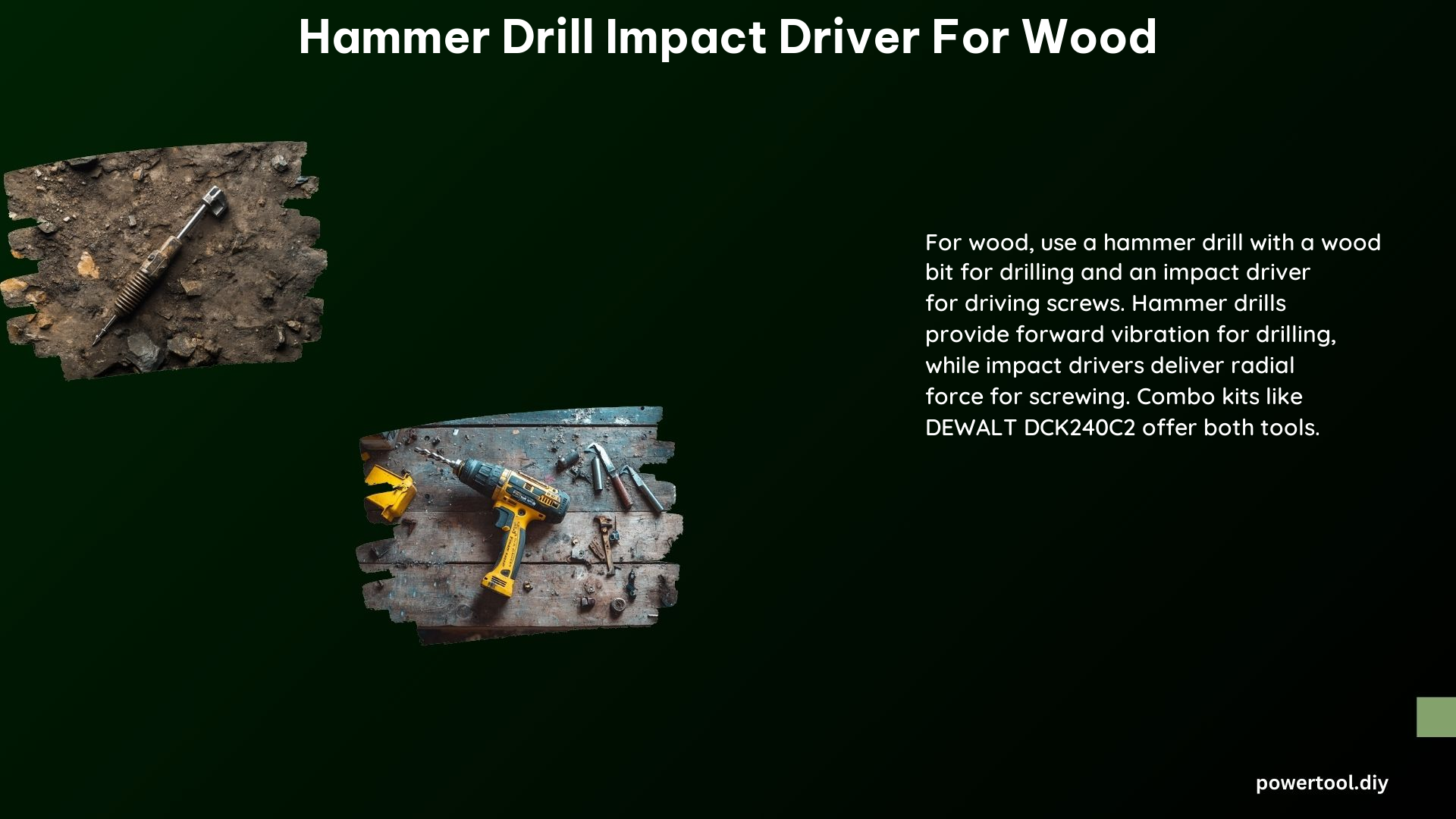Hammer drills and impact drivers are two distinct power tools that serve different purposes, especially when it comes to working with wood. Understanding the key differences and technical specifications of these tools is crucial for DIY enthusiasts and woodworkers to select the right tool for their specific projects. This comprehensive guide will delve into the intricacies of hammer drills and impact drivers, providing you with the knowledge to make informed decisions and tackle your woodworking tasks with confidence.
Hammer Drill: The Powerhouse for Drilling
A hammer drill is a versatile power tool designed to handle the most demanding drilling tasks, particularly in hard materials like concrete, brick, and masonry. The distinguishing feature of a hammer drill is its unique hammering mechanism, which acts longitudinally, delivering powerful impacts directly to the drill bit. This hammering action allows the drill to penetrate tough materials with ease, making it an indispensable tool for heavy-duty applications.
Technical Specifications of Hammer Drills
- Torque Ratings: Hammer drills typically have higher torque ratings, ranging from 450 to 600 in-lbs, providing the necessary power for heavy-duty drilling.
- Variable Speed Settings: Hammer drills often feature variable speed settings, allowing users to precisely control the drilling speed for optimal performance and control.
- Hammer-Only Mode: Many hammer drills include a dedicated hammer-only mode, enabling users to use the tool for chiseling or breaking up materials, further expanding its versatility.
Impact Driver: The Torque Master for Driving Screws

In contrast to the hammer drill, the impact driver is specifically designed for driving screws and bolts, particularly in stubborn materials like hardwood, metal, or dense composites. The impact driver’s hammering mechanism operates radially, delivering powerful rotational torque to the fastener, making it an ideal choice for tasks that require high torque and speed.
Technical Specifications of Impact Drivers
- Torque Ratings: Impact drivers boast significantly higher torque ratings, typically ranging from 1,000 to 1,500 in-lbs, providing the necessary power to drive even the largest screws and bolts with ease.
- High RPM Range: Impact drivers are known for their high RPM range, allowing users to drive screws at faster speeds, improving efficiency and productivity.
- Built-in LED Lights: Many impact drivers feature built-in LED lights, providing improved visibility in dimly lit work areas, enhancing the user’s control and precision.
When to Use a Hammer Drill vs. an Impact Driver
The choice between a hammer drill and an impact driver largely depends on the specific task at hand and the material you’re working with.
Hammer Drill Applications
- Drilling into Masonry, Concrete, or Hard Materials: The hammer drill’s powerful hammering action makes it the go-to tool for drilling into tough materials like concrete, brick, and masonry.
- Heavy-Duty Drilling Tasks: When you need to drill large holes or tackle demanding drilling projects, the hammer drill’s high torque and variable speed settings make it the ideal choice.
- Applications Requiring Less Precision: Hammer drills are well-suited for tasks where a high level of precision is not a primary concern, such as creating anchor points or drilling through walls.
Impact Driver Applications
- Driving Screws in Hardwood, Metal, or Dense Materials: The impact driver’s exceptional torque and speed make it the perfect tool for driving screws, especially in challenging materials like hardwood, metal, or dense composites.
- Tasks Requiring High Torque and Speed: When you need to efficiently drive large screws or bolts, the impact driver’s powerful hammering mechanism and high RPM range will get the job done quickly and effectively.
- Applications Demanding Precision: Impact drivers excel in tasks that require a high level of control and precision, such as cabinetry, furniture assembly, or delicate woodworking projects.
Combo Kits: The Best of Both Worlds
Many tool manufacturers offer combo kits that include both a hammer drill and an impact driver, providing users with the versatility to tackle a wide range of woodworking and construction tasks. These combo kits are an excellent choice for DIY enthusiasts and professionals who need the capabilities of both tools in a single package.
Conclusion
Hammer drills and impact drivers are specialized power tools with distinct capabilities, each designed to excel in specific applications. By understanding the key differences and technical specifications of these tools, you can make informed decisions and select the right tool for your woodworking projects, ensuring efficient and successful results. Whether you’re a seasoned DIY enthusiast or a professional woodworker, this comprehensive guide will equip you with the knowledge to navigate the world of hammer drills and impact drivers with confidence.
References
- https://www.reddit.com/r/Dewalt/comments/zanpn0/impact_driver_vs_drill_driver_vs_hammer_drill/
- https://www.homedepot.com/c/ab/impact-drivers-vs-drills/9ba683603be9fa5395fab9009f66e37
- https://thewoodwhisperer.com/articles/drills-vs-hammer-drills-vs-impact-drivers/
- https://www.homedepot.com/b/Tools-Power-Tools-Power-Tool-Combo-Kits/Hammer-Driver-Drill/N-5yc1vZc2ecZ1z0vhng
- https://www.amazon.com/hammer-drill-impact-driver-combo/s?k=hammer+drill+impact+driver+combo
